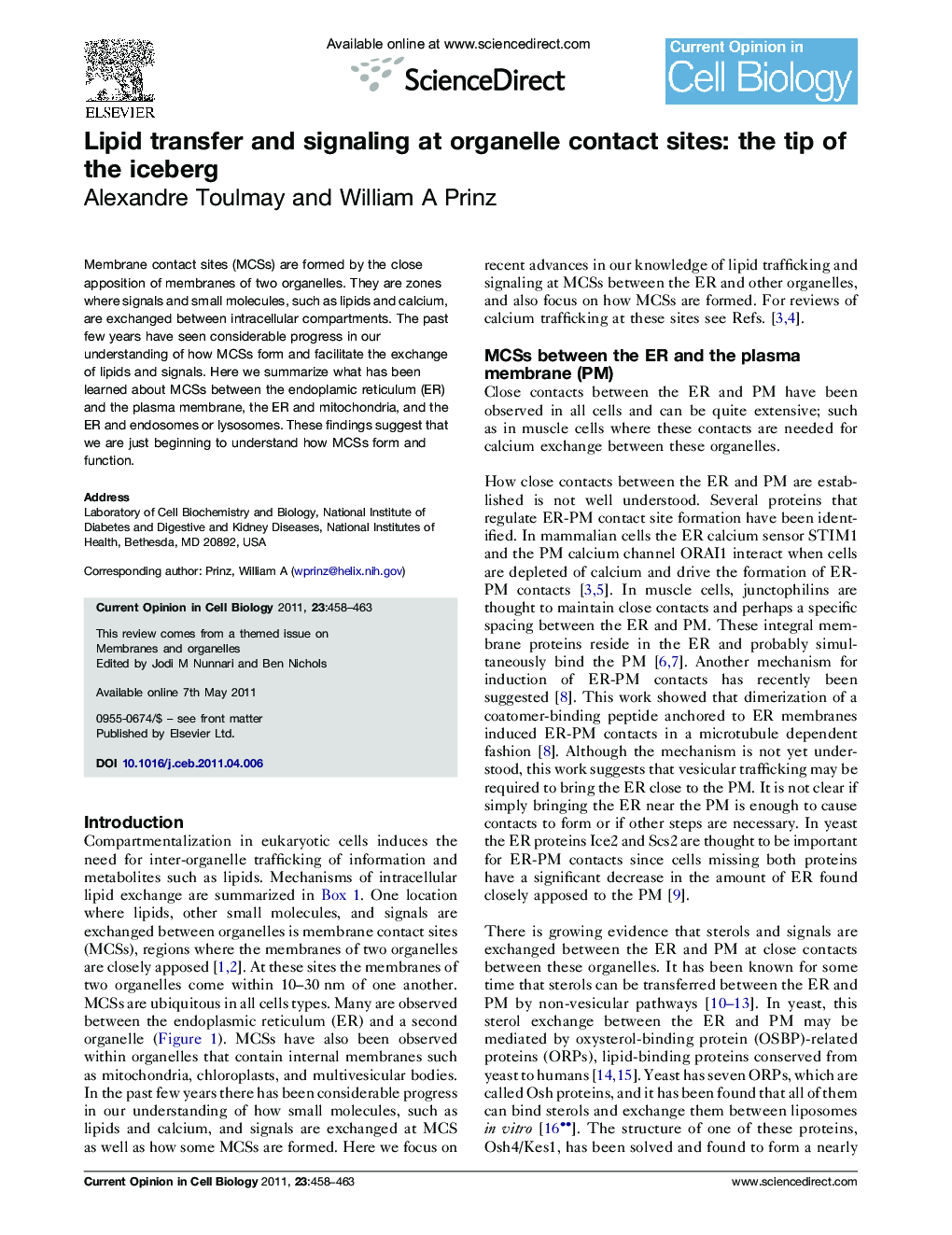| Article ID | Journal | Published Year | Pages | File Type |
|---|---|---|---|---|
| 2169891 | Current Opinion in Cell Biology | 2011 | 6 Pages |
Membrane contact sites (MCSs) are formed by the close apposition of membranes of two organelles. They are zones where signals and small molecules, such as lipids and calcium, are exchanged between intracellular compartments. The past few years have seen considerable progress in our understanding of how MCSs form and facilitate the exchange of lipids and signals. Here we summarize what has been learned about MCSs between the endoplamic reticulum (ER) and the plasma membrane, the ER and mitochondria, and the ER and endosomes or lysosomes. These findings suggest that we are just beginning to understand how MCSs form and function.
► Membrane contact sites (MSCs) are zones of apposition of two organelle membranes. ► Signals and small molecules such as lipids and calcium are exchanged at MCSs. ► Complexes that tether membranes and regulate MCSs formation are discussed. ► Recent studies suggest new mechanisms of lipid exchange and signaling at MCSs.
